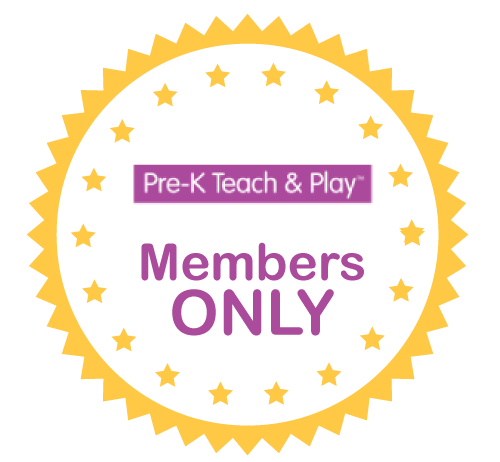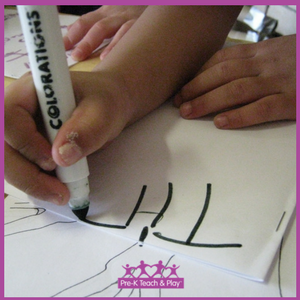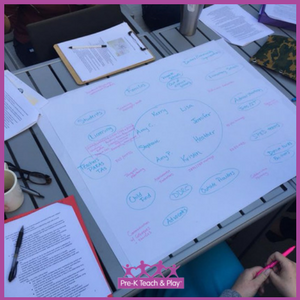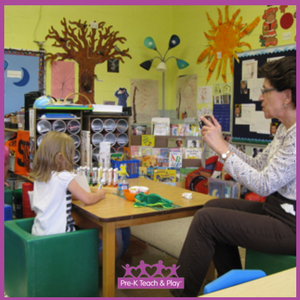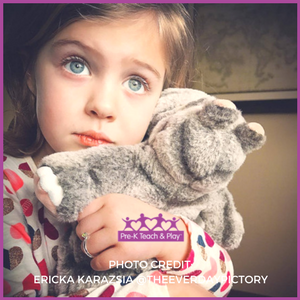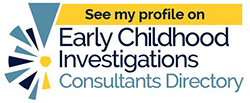ECE Solutionary Membership Resources for Month 11
This month, I've hand-picked solutions from the categories of IEPs, mindfulness, professional development, real common core, quality indicators, and self-regulation.
Click here to download this month's at-a-glance handout
As always, each solution includes a brief description and hyperlink to a PDF, YouTube video, blog post, podcast, and/or website. For those who end up feeling like the solution was TL;DR (too long; didn't read), I provide an at-a-glance tip you can put into action immediately. Each tip is signified by a purple hashtag (#prektip).
IEP and Mindfulness Solutions
These course resources are designed to help teachers create meaningful IEPs. These 4 lessons cover topics ranging from strategies for writing PLAAFPs to determining if goals are measurable and meaningful. - written by me
Want even more? View my Facebook Live session to learn 4 tips for writing meaningful IEPs and 4 tips for inclusion. Or listen to my member-exclusive audio where I breakdown the differences between writing IEPs and writing evaluation reports.
#prektip: How do we determine that a child has made progress that matters? Look at the dimensions of behavior: frequency, accuracy, latency, duration, endurance, intensity, and independence. (click here to tweet this!)
This video from Long Story Shorts discusses the difficulties of meeting the diverse needs of your classroom. It gives tips on how to be mindful in order to decrease stress and increase job satisfaction for educators - created by Long Story Shorts
#prektip: Being mindful allows us to tune-in to our students’ strengths and weaknesses. (click here to tweet this!)
Professional Development and Real Common Core Solutions
This blog teaches 4 important strategies to help plan meetings that matter. Professional development should be meaningful, not just another meeting that could’ve been an email. - written by me
Want even more? Check out this infographic that outlines the strategies for staff meeting success
#prektip: Professional development should encourage staff to explore, create, brainstorm, and dive deeper into topics that drive their passion. (click here to tweet this!)
This article demonstrates how social-emotional skills can be integrated into the classroom: not by finding a non-existent extra 30 minutes for a lesson but by incorporating conversations into existing curriculum. - written by Vicki Zakrzewski
#prektip: Teaching social-emotional skills in the classroom encourages creativity and thoughtfulness in both teachers and students. (click here to tweet this!)
Quality Indicator Solutions
This blog post examines the efficacy of alphabet learning in preschool and its predictive power for future reading success. - written by William Teale
#prektip: Not all letters are created equal. Children’s unique abilities and letters’ unique characteristics require extra attention in alphabet instruction. (click here to tweet this!)
In this video cause and effect are examined from the standpoint of both child development and adult interaction. Cause and effect allow us to engage children in meaningful activities and influence those around us to see the value in inclusion - written by me
#prektip: Cause and effect helps bridge the gaps in child development and creates meaningful connections for educators to begin practicing inclusion. (click here to tweet this!)
Self-Regulation Solutions
This blog post offers tips for increasing our self-regulation skills and those of our children. Take time to reflect on your child’s and your self-regulation successes and how you can continue to build those skills. - written by Julie McIsaac
#prektip: When we are calm, we teach those around us how to be calm. (click here to tweet this!)
In this podcast Barbara Avila and I discuss real-life scenarios regarding pre-k students with ASD who struggle when not being held. This struggle to self-regulate can drain a teacher so we offer insight and suggestions to create peace for these students and teachers. - written by Barbara Avila and me
#prektip We have the power to show kids they are capable and grow their confidence in their own independence. (click here to tweet this!)
